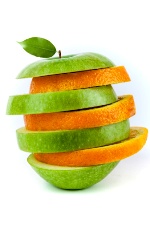 Here’s some health news about a particularly powerful flavonoid. It’s called quercetin, and it could help fight free radicals. These particles are responsible for damaging cell membranes, screwing up DNA, and even killing off healthy cells. They’re the sort of particles you don’t want roaming around your body, because they can cause cancer, heart disease, and Alzheimer’s disease.
Here’s some health news about a particularly powerful flavonoid. It’s called quercetin, and it could help fight free radicals. These particles are responsible for damaging cell membranes, screwing up DNA, and even killing off healthy cells. They’re the sort of particles you don’t want roaming around your body, because they can cause cancer, heart disease, and Alzheimer’s disease.
One way to put the brakes on all this damage is to eat a diet high in quercetin. Quercetin is an antioxidant that knows how to neutralize free radicals so that they don’t run rampant throughout your body, messing with all your cells. As an added benefit, quercetin may play a role in neutralizing LDL cholesterol, too, protecting your heart from disease.
Just how good is quercetin at preventing oxidative damage? In a recent study performed at the University of South Florida, researchers evaluated the antioxidant power of a group of flavonoids. When all the tests were done, two flavonoids stood out: catechin and quercetin. They sound like twins, and in a way, they are.
Catechins are also antioxidants that fight oxidative damage. But, according to the researchers, quercetin has a nearly 10-fold higher antioxidative effect than catechin—which is not to say you don’t need catechin. You’ll want to make sure you continue to drink green tea—an excellent source of catechins. But, to really boost your free radical neutralizing power, get some quercetin every day. Add these foods to your diet: citrus fruits, apples, onions, parsley, sage, tea, and red wine—all excellent sources of quercetin.
Read more on the health benefits of four other potent antioxidants.
Sources for Today’s Articles:
The 10-Fold Healing Power of Quercetin
Tay, W.M., et al., “Metal Binding of Flavonoids and Their Distinct Inhibition Mechanisms Toward the Oxidation Activity of Cu(2+)-β-Amyloid: Not Just Serving as Suicide Antioxidants!,” Inorg Chem. January 9, 2013.
